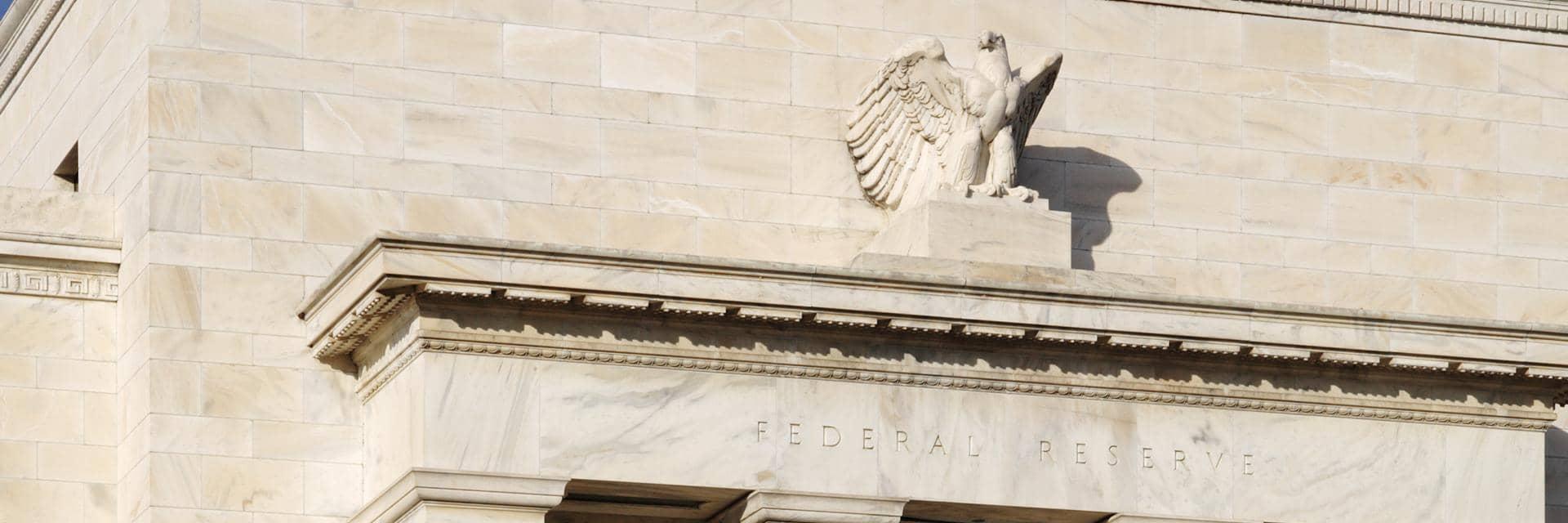Bond performance throughout most segments has been negative this year, while volatility is likely to remain high. Short-dated bonds have historically been relatively stable during phases of higher trending yields, and could also help investors to find positive returns this time.
As mentioned in our Outlook 2022 in November, the rate market will, to a very large extent, be driven by central bank action this year. The recent 50 basis point hike in the US Federal Reserve’s (Fed) policy was widely expected and well telegraphed by the central bank.
Still, what may follow seemed more of an outlier probability only a few months ago, and has not been witnessed for four decades, back in the mighty 1980s. A move of the order of back-to-back 50bp hikes was last seen in 1984 (125bp over two meetings). If the Fed follows through with 50bp hikes in three consecutive meetings, that would be the biggest step seen since Paul Volcker’s Fed lifted rates by 800bp within three months, in 1980.
The inflation fight is on
The Fed has acknowledged that’s its focus is now on taming inflation, and the central bank seems (at least for now) less concerned about any repercussions for growth in the wake of a barrage of hikes.
Only after the Fed is successful in dousing the flames of inflation, will it focus on the period thereafter. This suggests there is a reasonable likelihood that the Fed may follow through with three consecutive hikes.
Going beyond neutral
Current market pricing indicates an upper target rate of more than 3.2% by mid-2023, compared to the Fed’s own “dot plot” projection of 3%. The central bank seemingly finds itself more in a position to dampen inflation by putting the brakes on demand. This stands in contrast to six months ago, when policymakers believed it had only limited leverage to tackle supply driven inflation.
Fed chair Jerome Powell has described the job market as “too hot” and stated that “it is our job to get it into a better place where supply and demand are closer together”. In this mindset, and with rising inflation expectations in focus, the Fed may well be willing to hike beyond a “neutral” level.
Fed needs to tread carefully
But the US central bank may have to tread carefully. March inflation data show that the components that have largely caused higher inflation of late, and were triggered by the pandemic, seem to have consolidated; potentially a sign that inflation may moderate towards the end of this year, and a warning that the Fed may want to avoid hiking into the next recession.
Volatility at long end to stay
Going further along the curve, rates are likely to stay volatile. Uncertainty over the number and size of rate hikes, the inflation outlook, and the fact that the Fed will retire some of its Treasury bond portfolio on the balance sheet, may be enough to spark further volatility on the long end. While higher rates, possibly going beyond 3%, look more possible, focussing on short- to medium-term bonds looks most appropriate for now.
The case for short-term bonds
Several reasons point to the appeal of short- to medium-term bonds in this environment. Higher yields (absolute and relative), positive yield to maturity, pull to par effect, and price behaviour all come to mind.
1. Higher yields
This is the first and most obvious reason. While prospects for inflation and the impact of real yields should be taken into account, this is true for all other asset classes and longer bonds or cash. At least for this current comparison nominal yields can be considered.
The 2-year yield is well over 2.7%, compared to 0.15% only a year ago and only 25bp lower than the 10-year counterpart. As we have mentioned before, the difference between the 2-year market yield and the Fed target rate of 150bp is high, in historical terms.
Forward rates, which are shaped by the 2-year yields, for example, imply short rates of 3.2% in 15 months (deposits and fixes of up to three months). This means that hikes of this magnitude are already in the price, even though it is not set in stone that the Fed will eventually reach this point.
2. Yield to maturity
Certainly, if the rate curve started to price in hikes beyond 3.2%, investors may face mark-to-mark losses during the holding period. However, any bond bought with a positive yield at the outset will provide a positive return if held to maturity (unless any of the respective bonds default, of course). As long as losses are not crystalised, the positive purchase yield will still be achieved.
3. Pull-to-par effect
Portfolios or mandates with shorter bonds in particular should profit from higher market yields, as bonds mature relatively quickly and as proceeds can be reinvested at higher levels. Reinvestments at higher market rates usually lead to superior performance after phases of yield rises.
Price behaviour
While markets are very much focussed on the US 10-year yield, shorter-dated bonds are less exposed to the benchmark rate, compared to longer duration bonds, for a few reasons.
First, because the short-end yield can react differently to the long end. (admittedly, this time it was short-end yields which surged the most). Second, shorter-term bonds are less price sensitive compared to longer-dated bonds applying modified duration and convexity. For example, the US Treasury 10-year benchmark bond is exposed to more than an 8% price loss, should the market rate increase by 100bp. This compares to a 1.85% price loss for a 2-year Treasury bond.
More importantly, shorter-term bonds have shown positive performance during rate-hiking phases. For instance, Bloomberg’s US 1-3-year credit index has always been positive when the respective 2-year market rate (and 10-year rate) rose as a result of past hikes. The latest rise seems to be an exception, mainly due to the very low yield seen at the outset (see table). It appears that the entry yield provides a large performance cushion, while investing at higher rates adds to the benefit. As such. investing at a rate well over 2.5% seems more beneficial.


